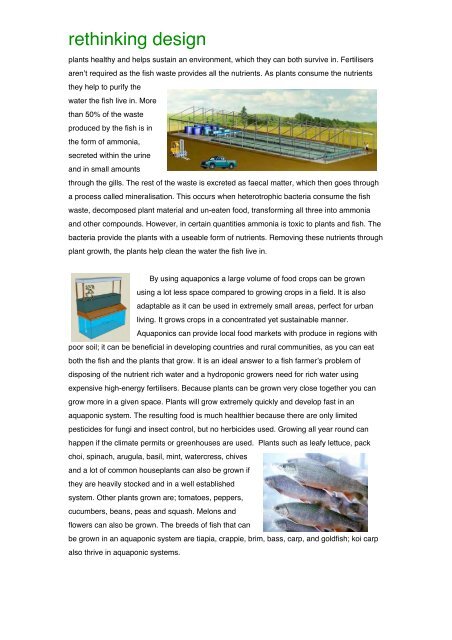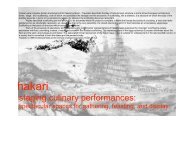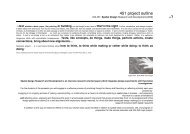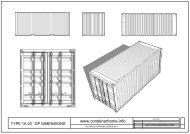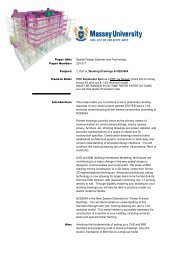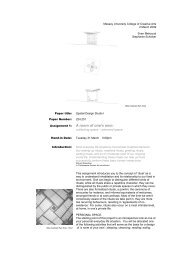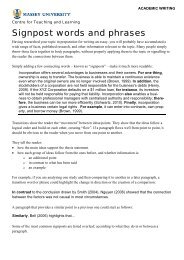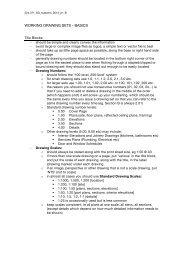rethinking design - Spatial Design@Massey
rethinking design - Spatial Design@Massey
rethinking design - Spatial Design@Massey
Create successful ePaper yourself
Turn your PDF publications into a flip-book with our unique Google optimized e-Paper software.
ethinking <strong>design</strong>plants healthy and helps sustain an environment, which they can both survive in. Fertilisersarenʼt required as the fish waste provides all the nutrients. As plants consume the nutrientsthey help to purify thewater the fish live in. Morethan 50% of the wasteproduced by the fish is inthe form of ammonia,secreted within the urineand in small amountsthrough the gills. The rest of the waste is excreted as faecal matter, which then goes througha process called mineralisation. This occurs when heterotrophic bacteria consume the fishwaste, decomposed plant material and un-eaten food, transforming all three into ammoniaand other compounds. However, in certain quantities ammonia is toxic to plants and fish. Thebacteria provide the plants with a useable form of nutrients. Removing these nutrients throughplant growth, the plants help clean the water the fish live in.By using aquaponics a large volume of food crops can be grownusing a lot less space compared to growing crops in a field. It is alsoadaptable as it can be used in extremely small areas, perfect for urbanliving. It grows crops in a concentrated yet sustainable manner.Aquaponics can provide local food markets with produce in regions withpoor soil; it can be beneficial in developing countries and rural communities, as you can eatboth the fish and the plants that grow. It is an ideal answer to a fish farmerʼs problem ofdisposing of the nutrient rich water and a hydroponic growers need for rich water usingexpensive high-energy fertilisers. Because plants can be grown very close together you cangrow more in a given space. Plants will grow extremely quickly and develop fast in anaquaponic system. The resulting food is much healthier because there are only limitedpesticides for fungi and insect control, but no herbicides used. Growing all year round canhappen if the climate permits or greenhouses are used. Plants such as leafy lettuce, packchoi, spinach, arugula, basil, mint, watercress, chivesand a lot of common houseplants can also be grown ifthey are heavily stocked and in a well establishedsystem. Other plants grown are; tomatoes, peppers,cucumbers, beans, peas and squash. Melons andflowers can also be grown. The breeds of fish that canbe grown in an aquaponic system are tiapia, crappie, brim, bass, carp, and goldfish; koi carpalso thrive in aquaponic systems.


